Soldiers assigned to the 3rd U.S. Infantry Regiment, known as “The Old Guard,” maintain vigil during the first snowfall of the season at the Tomb of the Unknown Soldier at Arlington National Cemetery in Virginia, Dec. 16, 2020.
Providing up-to-date information, news and original content on American Military issues.
Soldiers assigned to the 3rd U.S. Infantry Regiment, known as “The Old Guard,” maintain vigil during the first snowfall of the season at the Tomb of the Unknown Soldier at Arlington National Cemetery in Virginia, Dec. 16, 2020.
A Marine enters a room during interior tactics training at Camp Hansen in Okinawa, Japan, Dec. 10, 2020.
Dec. 22, 2020 | BY Secretary of the Air Force Public Affairs
The secretary of the Air Force and the Air and Space Forces service chiefs ordered the review June 2. The measure formalized a step that former Chief of Staff of the Air Force Gen. David Goldfein raised in an official note to commanders and other senior leaders on June 1 addressing an "apparent inequity in our application of military justice" among other issues. He stated, "We will not shy away from this; as leaders and as airmen, we will own our part, and confront it head on."

In a June 3 open letter to all airmen and space professionals signed by the Air Force Secretary and the two service chiefs, the leadership team highlighted the department's self-initiated review and wrote, "We are listening, and we are taking action."
The inspector general's review focused specifically on assessing racial disparity in military discipline processes and personnel development and career opportunities as they pertain to Black/African American airmen and space professionals.
According to Air Force IG officials, the narrow focus related to Black/African American airmen and space professionals was necessary to enable a prompt, yet thorough, assessment, but the subsequent efforts to be undertaken as a result of the review will not be exclusive to a single minority group.
"Although release of this report took longer than we originally planned, we're confident that the lessons we will learn and the plans in development to further examine disparities will provide benefit to all of our airmen and space professionals," Lt. Gen. Sami Said, Air Force Inspector General, said.
Additionally, Said explained that it is important to underscore that the review was focused on assessing racial disparity within the Air Force and was not chartered to determine whether or not racial bias or discrimination is present. Such an examination would require a much deeper study and a broader look at American society in general, which was outside the defined scope of the review, according to Said.
The IG review also did not focus on root cause analyses for any racial disparities found during the review due to the considerable time this would have added to completing the report. Instead, the intent was that root cause analyses would follow completion of the review, as necessary.
The review's methodology included an empirical examination of Air Force military justice data dating back to 2012; career development and opportunity data involving civilian, enlisted and officer ranks; and a review of all pertinent personnel and legal Air Force instructions and related publications. Additionally, the IG analyzed individual perspectives from a departmentwide IG racial disparity survey that garnered more than 123,000 responses, including more than 27,000 pages of feedback from members; conducted formal interviews of senior leaders, subject matter experts and service members; held 138 in-person 'boots-on-the-ground' listening sessions with more than 1,300 airmen and space professionals from across all major commands; and interviewed command teams at 20 installations. Finally, the IG team reexamined 23 past studies and reports involving race and demographics in the military.
The review confirmed that racial disparity exists for Black/African American airmen and space professionals in the areas of military discipline and career developmental opportunities. Specifically, varying degrees of disparity were identified in apprehensions, criminal investigations, military justice, administrative separations, placement into occupational career fields, certain promotion rates, officer and civilian professional military educational development and some leadership opportunities.
According to the report, the data do not address why racial disparities exist in these areas, and that while the data shows race is a correlating factor, it does not necessarily indicate causality.
The review also found that no racial disparities appear to exist within the areas of accessions, retention, or enlisted professional military education, and there were no inherent, systemic or procedural biases found in Air Force personnel and legal guidance pertaining to discipline.
The IG report defines racial disparity as "existing when the proportion of a racial/ethnic group within the subset of the population is different from the proportion of such groups in the general population." It goes on to state that while the presence of a disparity alone is not evidence of racism, discrimination, or disparate treatment, it presents a concern that requires more in-depth analysis. Key stakeholders within the Air Force and Space Force have now been tasked to identify the root causes of these disparities.
Air Force Secretary Barbara Barrett applauded those who took time to contribute to the in-depth review and emphasized that work remains to be done.
"Thank you to the tens of thousands of Air and Space Force members who related their personal experiences, both favorable and unfavorable" Barrett said. "The IG review identified racial disparities within military justice and developmental programs. Now, we're analyzing root causes and taking appropriate actions to address these causes. These actions will include evaluating potential barriers to inclusion, expanding mentorship programs, and exploring ways to inspire and attract diverse youth to join the Air Force and Space Force."
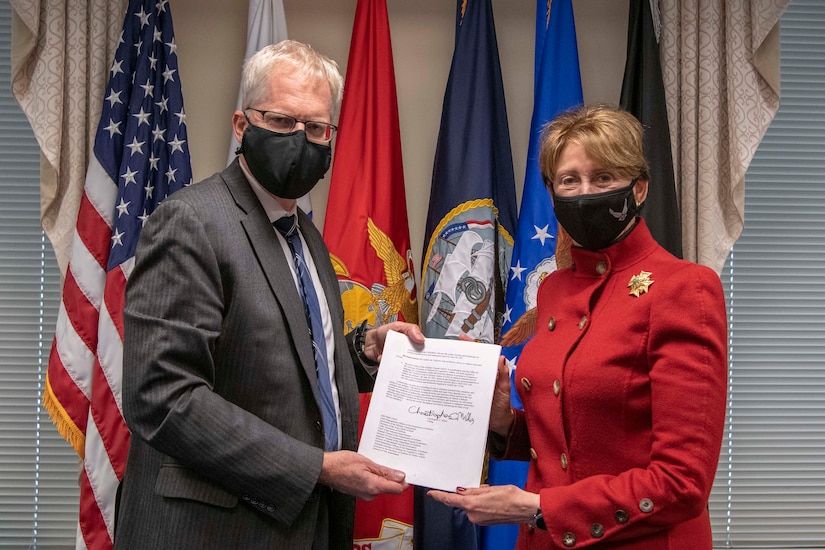
Although the review's primary focus was on identifying the degree to which racial disparity is present, the IG team conducting the review received a large volume of firsthand accounts of experiences with bias, as well as individual acts of racism. According to the report, while it is impossible to validate experiences reported during feedback sessions or within the survey, the themes that emerged from the feedback make it reasonable to conclude that individual acts of racism have occurred in the Air Force.
Additionally, the review highlighted feedback from a significant number of Black airmen who voiced distrust in their chain of command to address racism, bias and unequal opportunities within the Air Force. The majority of Black survey respondents also felt that Black/African American airmen are not given the benefit of the doubt by their chain of command when it comes to military discipline.
Air Force Chief of Staff Gen. Charles Q. Brown Jr. acknowledged the critical feedback and the need to build and maintain trust between our airmen and space professionals and their chain of command.
"The IG's survey and interviews are noteworthy in that they empowered airmen and space professionals to provide their unfiltered personal perspectives and experiences, and they delivered loud and clear," Brown said. "Racial disparity isn't an easy topic, and something we don't traditionally talk about much throughout our levels of command. This report and the many engagements with airmen and space professionals have increased chain of command awareness and an opportunity to build trust. Now, we must all move forward with meaningful, lasting and sustainable change to do so."
Notably, at Barrett's request, the IG's review provides a preliminary road map for addressing racial disparity. In accordance with the report's recommendations, the department has begun root cause analyses and will provide updated action plans, as appropriate, to the Secretary and Air and Space Force service chiefs.
The Air Force Inspector General will conduct a progress report six months after the report's initial publication, followed by an annual review. Both of these assessments will be publicly released and provided to all airmen and space professionals, according to the report.
Chief of Space Operations Gen. John "Jay" Raymond underscored the importance of diversity and the need for leaders at every echelon to do their part to ensure all airmen and space professionals feel included and empowered to maximize their talents.

"Accountability begins with us, and we have the opportunity to create a culture that inherently values diversity and inclusion," Raymond said. "Leaders at all levels must commit to having tough conversations, learning about racial disparities and identifying their part in creating an environment where all people have the same opportunities for success, an environment where every person is heard, every person is seen and every person is valued."
Concurrent with the IG's review, Air Force senior leaders conducted multiple listening sessions with Air Force and Space Force members to gain additional insight and perspectives.
Additionally, the department instituted a task force to comprehensively address the issue of racial, ethnic, gender and other demographic differences and their impact on the Air and Space Forces.
Since June, the task force has facilitated additional tracking of administrative discipline data, to include demographics; increased ROTC scholarships at historically Black colleges and universities; revised dress and appearance regulations; acceptance of a SuperScore combination for the Air Force Officer Qualifying Test, which gives the applicant the opportunity to use his or her highest score from each part of the test; created partnerships with African American fraternities and sororities and the Congressional Hispanic Caucus Institute; established a sixth team as part of the Barrier Analysis Working group (Asian-American/Pacific Islander); and will initiate the Department's new "GO Inspire" program in January designed to increase Air and Space Force general officer outreach to youth to increase diversity in operational career fields and the broader force.
In October, the task force transitioned into the Diversity and Inclusion Office, which will report directly to the Secretary of the Air Force. The IG's report recommends that this office also review the report's findings and assess applicability to broader diversity and inclusion initiatives.
Air Force Senior Airman Amber Barkley places a wreath on a gravesite at the Delaware Veterans Memorial Cemetery in Millsboro, Del., Dec. 19, 2020, for National Wreaths Across America Day.
Soldiers put lights on a UH-1 Huey helicopter for a holiday event at Hohenfels Training Area, Germany, Dec. 18, 2020.
From left: Army Spcs. Raul Jaimes, Kevin Piepenbrink and Shawn Milburn fire a 60 mm mortar system during a training exercise in Djibouti, Dec. 16, 2020.
Arizona Army National Guard Spc. Brenna Rath receives the first round of the Moderna COVID-19 vaccine at Papago Park Militar
Navy Seaman Ezequiel Vega receives the COVID-19 vaccine at Walter Reed National Military Medical Center in Bethesda, Md., Dec. 21, 2020, as part of Operation Warp Speed. The national initiative accelerates the development, production and distribution of COVID-19 vaccines, therapeutics and diagnostics.
Air Force and Air National Guard aircraft line up in formation at Eielson Air Force Base, Alaska, Dec. 18, 2020.
Dec. 22, 2020 | BY David Vergun , DOD News
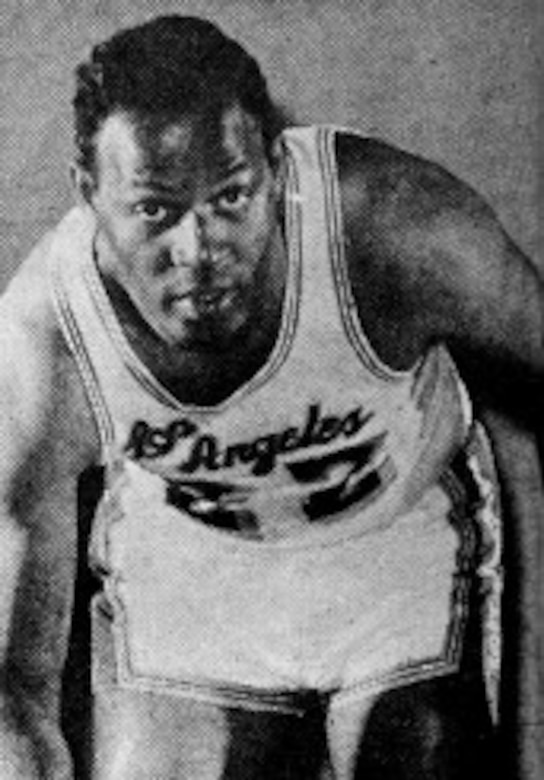
From 1961 to 1962, Baylor served on active duty in the Army and was stationed at Fort Lewis, Washington.
Instead of using his weekend liberty to go home or party with friends, Baylor used this time to continue playing for the LA Lakers, driving or flying to each game.
However, Army duties came first, and Baylor only managed to play 48 games during the 1961-62 season, but he scored more than 1,800 points. He averaged 38 points, 19 rebounds and five assists in each of those 48 games.

In all, Baylor appeared in eight National Basketball Association finals and helped to carry his team as a gifted shooter, rebounder and passer.
He was named NBA Rookie of the Year in 1959, and he was an 11-time NBA All-Star and a 10-time member of the All-NBA first team.
He's known as one of basketball's greatest players, and in 1977, he was inducted into the Naismith Memorial Basketball Hall of Fame. Other inductees include: Julius Erving, Larry Bird, James Worthy, Scottie Pippen, Dominique Wilkins, Rick Barry, Cheryl Miller and Sheryl Swoopes.
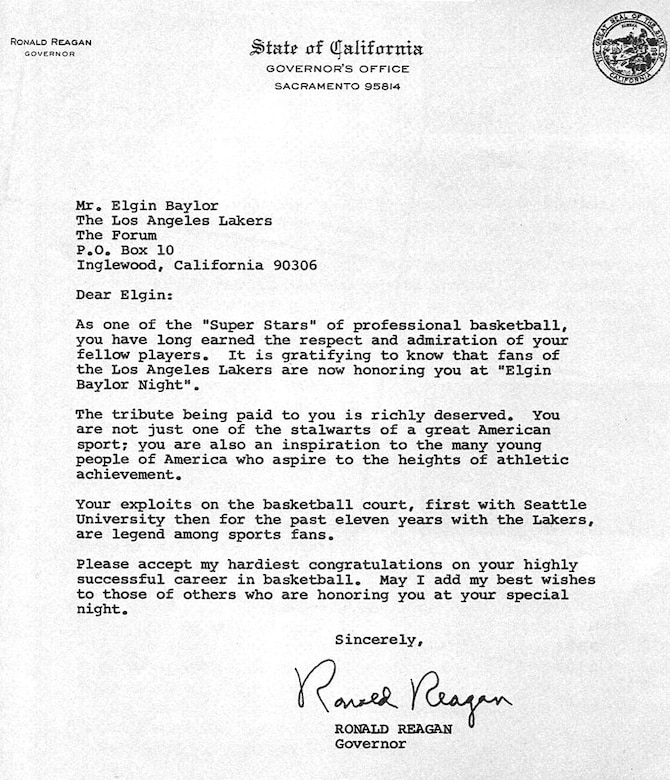
Unfortunately, Baylor is widely regarded as the greatest NBA player never to win a championship.
Following his time with the Lakers, Baylor served as coach for the New Orleans Jazz in 1974 and from 1976 to 1979.
He then served as vice president of basketball operations for the LA Clippers from 1986 until he retired in 2008.
In 2006, he won the NBA Executive of the Year award.
Baylor was also a minor Hollywood star, appearing on the TV series "Rowan & Martin's Laugh-In" in 1968, the Jackson 5's first TV special in 1971, an episode of "Buck Rogers in the 25th Century," and "Olympiad" in 1980.
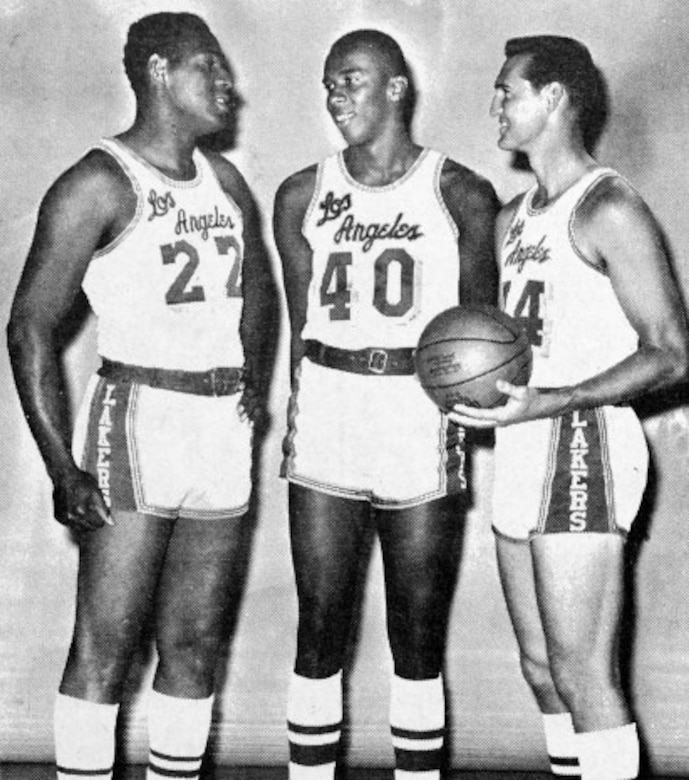
On April 6, 2018, a large, bronze statue of Baylor was unveiled at the Staples Center in Los Angeles. He attended the ceremony along with his fellow basketball greats Jerry West, Earvin "Magic" Johnson, Kareem Abdul-Jabbar and Shaquille O'Neal.
Dec. 22, 2020 | BY Elaine Sanchez
Army Capt. Rebecca Parrish, an Army nurse who has been serving on the frontlines of health care since the pandemic began, was among a small group of frontline medical professionals who received the first Pfizer-BioNTech COVID-19 vaccines at BAMC.
"I'm ready to eradicate this virus," said Parrish, a COVID-19 intensive care unit nurse.
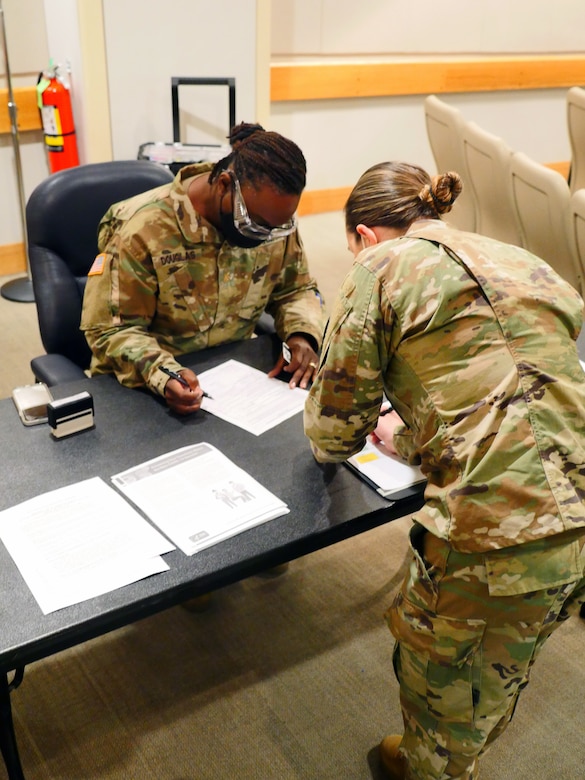
After Air Force Senior Airman Marisol Salgado administered Parrish's shot, a round of applause broke out in the room.
"This is a historic moment for BAMC," said Army Col. Michael Wirt, deputy commanding officer. "We are excited to launch this program today, focusing on our frontline staff, and look forward to expanding it to additional BAMC clinical and support teams in the days ahead."
As for the shot itself, "The flu shot hurts way more than that did," Parrish said with a smile. "I didn't even feel the needle go in."
Air Force Col. Heather Yun, deputy commander for medical services and an infectious disease physician, said she was "grateful and quite honestly thrilled to see this moment in history arrive."
"We have a vaccine that by all the data represents an incredibly effective and safe solution that exceeds all of our initial expectations, performing well in all ages, all demographic groups tested and with 95% efficacy," Yun said. "This is the turning point that we have all been waiting for, and I am so ready to take this necessary step to putting the pandemic in the past. When it's my turn, you will find me in that line with my sleeve rolled up."
The Food and Drug Administration issued an emergency use authorization, or EUA, for the Pfizer-BioNTech COVID-19 vaccine last week for U.S. citizens ages 16 and older on a voluntary basis. The San Antonio Military Health System, to include BAMC and Wilford Hall Ambulatory Surgical Center, is among the handful of Defense Department sites to receive doses of the vaccine. As the distribution hub, WHASC began vaccinating earlier this week, while BAMC received its first allocation of the vaccines after a thorough review of the receipt, distribution and administration process.
"The fact that we are among the first DOD sites to receive the vaccine is a testament to this team and their ability to carry out this important mission," said Army Brig. Gen. Shan Bagby, BAMC commanding general. "This process took a tremendous concerted effort from our logistics, administrative and clinical personnel."
The DOD's COVID-19 Task Force selected initial distribution sites based on capabilities that included the ability to accommodate ultra-cold, bulk storage; population of priority personnel and sufficient medical personnel to administer and track vaccine recipients.
BAMC will distribute the vaccine in a phased process, based on guidance from the Defense Department and Centers for Disease Control and Prevention. The first phase includes inpatient and outpatient health care and support personnel, emergency services and public safety personnel. At BAMC, the intensive care unit and emergency department staff involved in direct patient care were the first group vaccinated..
"After we validate the vaccination flow, we will begin to vaccinate in larger numbers and expand the recipient population, based on supply and the prioritization plan," said Bagby, noting more information regarding local prioritization of staff and patients will be available soon.
"We know there will be questions regarding this program, and we will do our best to address all concerns," he added. "We want to ensure our patients, service members, staff and families fully understand the process as we distribute and administer the vaccine in the days ahead, starting with the prioritized groups."
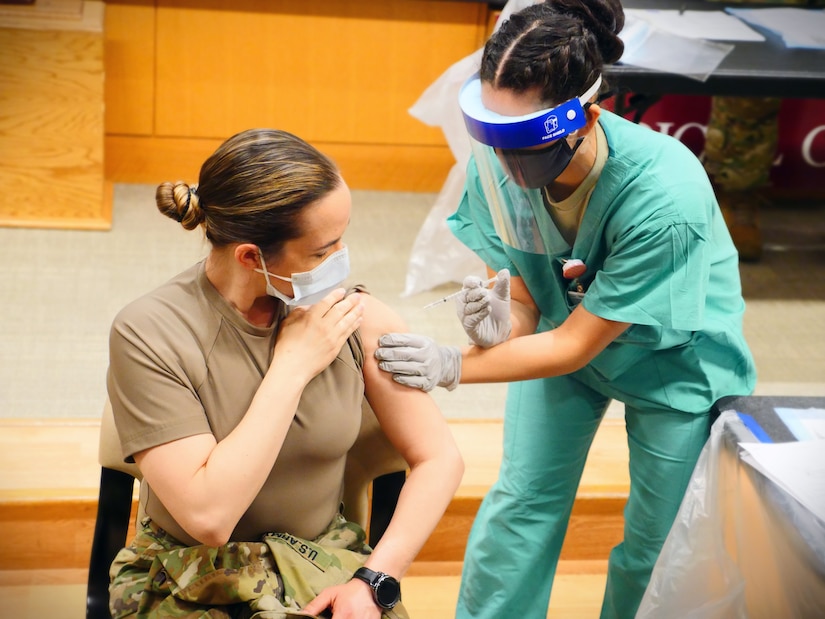
As the program ramps up, health care leaders are encouraging people to take the vaccine when offered to protect their health as well as the health of their family and community.
Yun acknowledged the uncertainty the public may feel about COVID-19 vaccines and their safety and stressed the importance of education and information to allay concerns.
"The vaccine approval process may seem swift, but I want to assure everyone that the review process has been incredibly comprehensive with all the data made available to peer-review, to an independent working group and to the Food and Drug Administration. The process has been open to the public, transparent and reassuringly highly rigorous."
"With approximately 70,000 subjects enrolled between the Pfizer and Moderna trials, which use the same technology, the symptom profile has been similar to what is seen with other routine vaccines, and most people did not have any symptoms beyond a sore arm," she added.
Post-vaccination symptoms are normal and, in fact, a positive sign, Yun explained. "Vaccines fight disease by producing an immune response within the body. Sometimes that means flu-like symptoms, such as aches and pains, headache and a low-grade fever may occur after being vaccinated. This is normal and a sign that your body is creating an immune response to protect you from COVID-19."
"Every person who steps up to take the vaccine when it's their turn is another step toward ending the pandemic," Yun noted, stressing the importance of having a large proportion of the population who are immune to SARS-CoV-2.
"This is our pathway to ending this pandemic safely; to contemplating a future without anxiety about transmitting COVID-19 to our loved ones; to ending the otherwise endless news reports on the climbing numbers of deaths; to being able to plan dinners out, concerts, weekends and holidays, vacations and college and nursing home visits; to attend births, graduations. promotions, weddings and all the important milestones of life" she said. "This, just like wearing masks and washing hands, will be a step that we can take to protect not only ourselves but also our families, our communities and our country."
"It's incredibly exciting to be involved in this historic national effort to stop the spread of COVID-19," Bagby added. "We are truly at the tip of the spear in this fight against this virus."
Get more information on the DOD's COVID-19 efforts and distribution plan from the Military Health System.
(Elaine Sanchez is assigned to Brooke Army Medical Center.)
Dec. 22, 2020
U.S. Acting Secretary of Defense Christopher C. Miller met with the President of Afghanistan, Ashraf Ghani, today at the Presidential Palace in Kabul.
Secretary Miller stated that it was an honor to return to Afghanistan again and to visit the men and women of the U.S armed forces who are spending their holidays overseas to ensure the safety and security of the American people and stability and security of Afghanistan.
Secretary Miller and President Ghani discussed the historic opportunity for peace, the continued U.S. support for the Afghanistan National Defense and Security Forces, and the importance of achieving a reduction in violence to advance the peace process.
Dec. 21, 2020
Acting Secretary of Defense Christopher C. Miller travelled to Royal Air Force bases Mildenhall and Lakenheath in the United Kingdom on Monday, December 21.
While at RAF Mildenhall, the Acting Secretary met with U.S. military leaders regarding the U.S. participation in the UK’s 2021 deployment of HMS Queen Elizabeth Carrier Strike Group, presented Secretary of Defense Maintenance Effectiveness Awards, met with service members and observed Special Operations aviation capabilities and platforms.
At RAF Lakenheath, Acting Secretary Miller received updates on COVID testing, treatment and vaccination efforts, observed Security Force and Emergency Response training facilities and viewed F-15 training simulators.
As home to 16 U.S. military bases and more than 20,000 U.S. military personnel, Department of Defense civilians and family members, the Acting Secretary’s visit served to further bolster the vital transatlantic alliance shared by our two countries.